Blog post
Level up your digital strategy with more visual storytelling

Search advertising hasn’t always been known for engaging imagery, but this is all changing. We’re taking storytelling beyond the search box with more visually immersive updates to enhance the advertising experience for consumers and advertisers alike.
Microsoft is differentiating itself by putting visuals at the forefront. We’re evolving our platform to integrate information with imagery and improve the search experience for consumers. And advertisers now have more innovative ways to incorporate rich imagery into ads, enhance visual storytelling, and increase performance. So why does this matter? And why should you make images a key component of your strategy?
Visuals are more important than ever on the Microsoft Advertising platform:
- 7 in 10 Microsoft ads include visual assets.1 These ads represent a large portion of prime real estate across our search results and content pages.
- 1.9x year-over-year growth in volume for ads containing visual assets, driven mainly by growth on the Microsoft Audience Network.1
- 46% of our active pilots enable visual storytelling — with more on the way.2
We also see that advertisers who make visuals a key component of their strategy drive increased performance:
- Forrester research found that brands who invested in creativity saw more than 18% higher total ROI for the same budget.3
- Our first-party data shows that small– and medium–size businesses that added images to their Microsoft Advertising campaigns saw upwards of 21% lift in impressions, clicks, and revenue.4
Here are a few ad types that serve rich visual assets across Microsoft Advertising that are inclusive of search and native ads — leading to better performance for brands.

Earning customer attention
The way people browse, research, and discover brands is evolving. People are spending more time online than ever before — at all hours of the day. With the blending of work and life, we saw more search growth on desktops (3x mobile growth), on weekends (2x weekday growth), and in the evenings (3x daytime growth) across our search network.5
Consumers are doing more research and taking longer to make their purchasing decisions — and images are a major part of that journey. Our first-party research shows that longer research journeys became more prevalent during the pandemic as 30-day journeys grew 35% year-over-year (YoY).6
With this influx of information, attention is now the biggest commodity up for grabs. Our brains need less than half a second to engage with content.7 At the moment someone is deciding what to click, it’s likely they’ll make their decision based on the visuals. So, how can you better earn customers’ attention?
Visual storytelling can help people quickly grasp a story without reading a word. As a result, it enables the storyteller to deliver a more compelling message. According to research firm Kantar, content with imagery results in 50% more recall.8 And with Microsoft Advertising, we see that visuals lead to more engagement, with 7% higher click-through rates (CTRs) on our ads — meaning better performance for your brand.4
An excellent creative strategy can make the difference between ads that not only hit your goals — but ones that set new standards.
How Microsoft is innovating for visual storytelling
Integration of search and visuals for consumers
Consumers are changing the way they search — which means that we’re looking to shake it up at Microsoft as well. We’re evolving the platform to make Bing more visually immersive, resonate more with our users, and make search easier and more compelling. We’re finding ways to move beyond a list of text links to results that combine information with visually rich imagery to enhance the search experience for consumers.
- People are starting to search for more exploratory queries where they’re looking for ideas and inspiration, such as recipes, travel ideas, home improvement, and more. In answer, we now show a collage of image and video content at the top of the page.
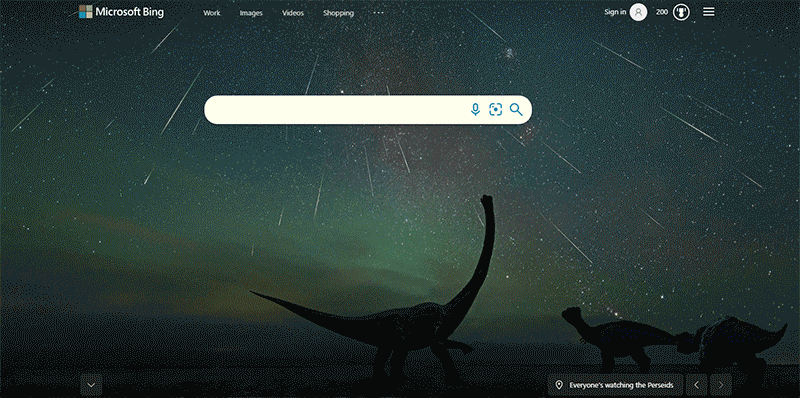
To increase visuals on the page, we’ve reconfigured how we show information on the right rail of the search results page. Now, images take precedent and surface information in a fun, attention-grabbing, and beautiful way.

- We’re investing in Microsoft Search in Bing so you can easily find personalized results from work and the web together with a single search.
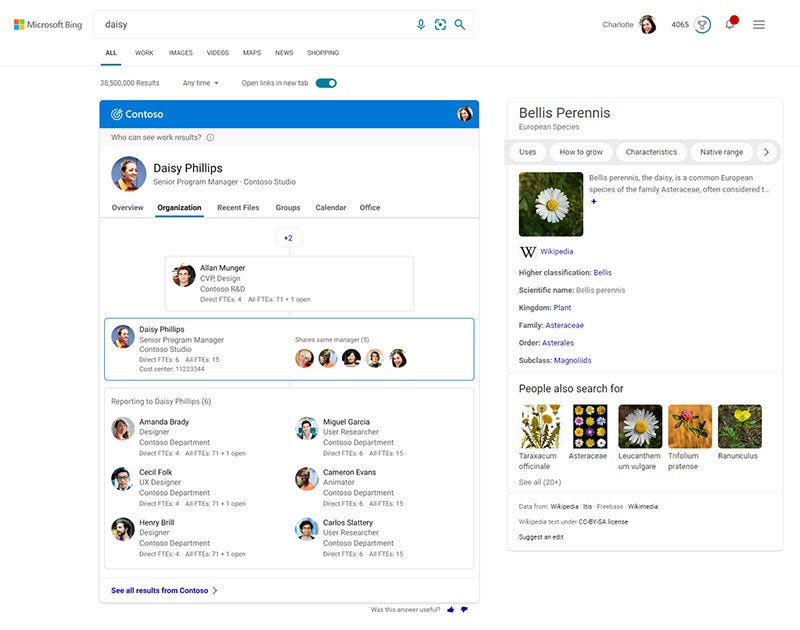
- We’re incorporating rich experiences into Windows 11 and Microsoft Start to integrate your personalized results to include news and topics of interest.
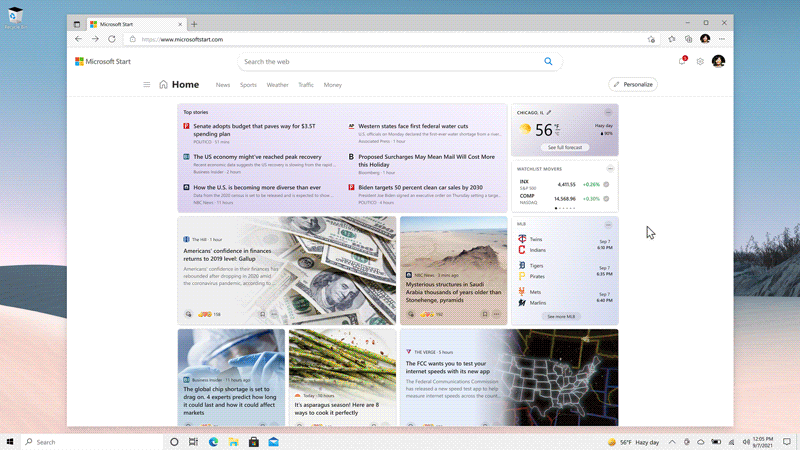
While all of the above experiences make the platform more engaging for consumers, advertisers can also benefit. The more visuals you add to your campaigns, the more likely your ads will appear in innovative experiences.
Visual storytelling for advertisers
We are enhancing our advertising products with new formats, extensions, and tools to further enrich brand storytelling for advertisers. These products allow brands to use their assets or easily find others through our partnerships. Images, videos, and feeds enable you to use rich assets seamlessly across your Microsoft Advertising and digital strategies.
With images, you can try:
- Multimedia Ads, a new responsive ad format that uses machine-learning technology to combine images, headlines, and descriptions to create large visual ads.
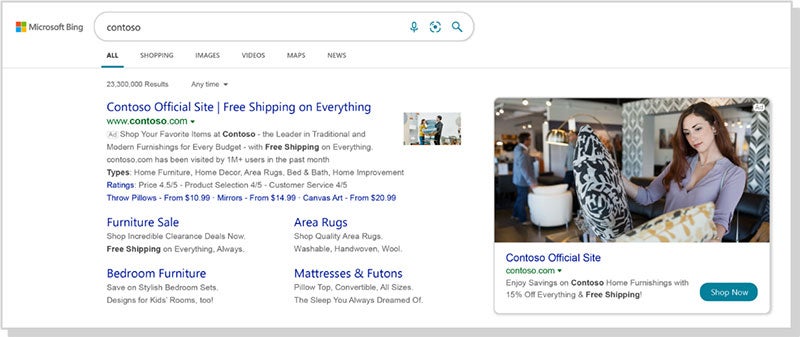
- Image Extensions allow you to add a small visual to text ads to create a larger ad footprint on the search results page.
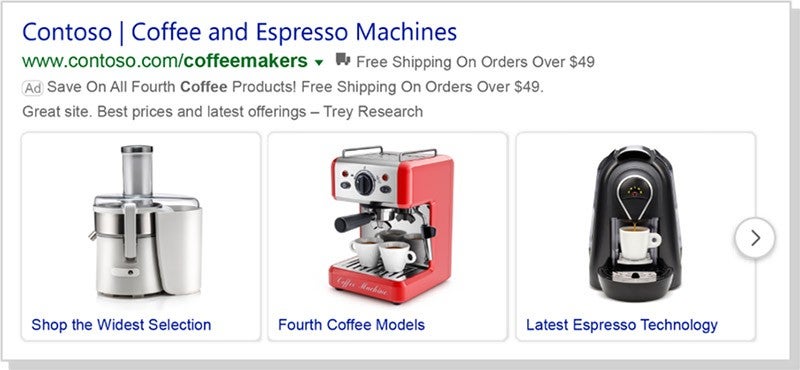
- The Microsoft Audience Network connects you to a unique audience across high-quality, brand-safe native ad placements, including MSN, Microsoft Edge, Outlook.com, and premium publishers.

With videos, you can test:
- Video Ads* on the Microsoft Audience Network to boost awareness, earn attention, and create emotional connections with your customers.
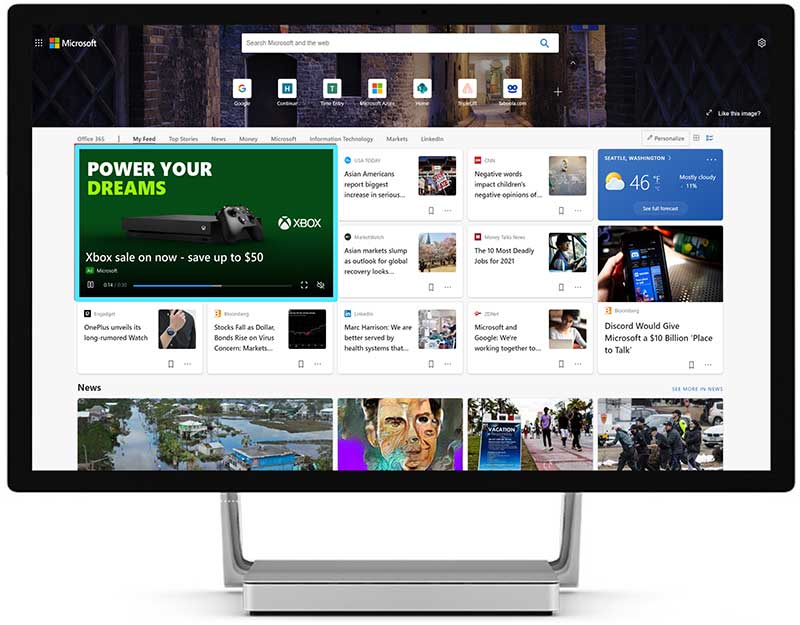
- Video Extensions combine video with other ad extensions to provide rich content to engage those searching for your offerings quicker.

With product and vertical feeds, you can leverage:
- Feed-based ads, which include product images that allow specific targeting so customers can be engaged (and re-engaged) across their entire decision journey. You can leverage your feeds across both the Microsoft Search Network and the Microsoft Audience Network.

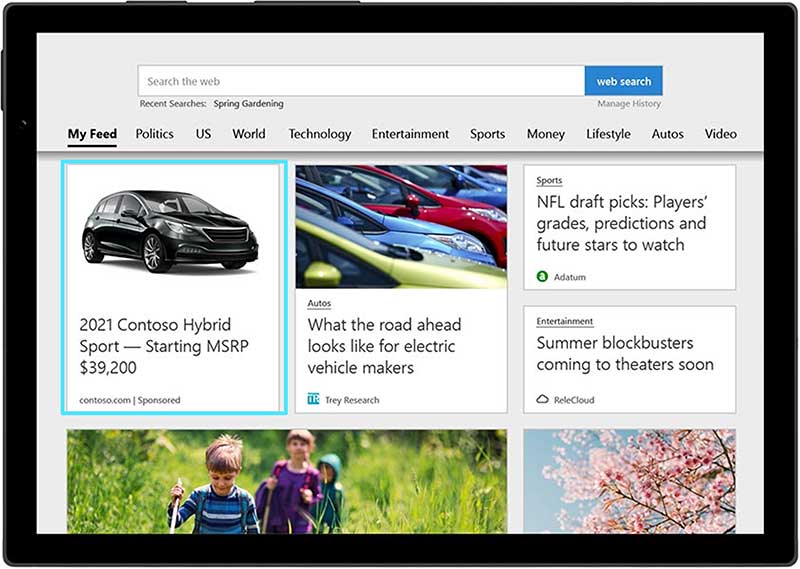
These tools can also help you to:
- Find new images
- Free access to Shutterstock allows you to choose from over 360 million high-quality, advertising-ready images. People Filters help you narrow the photos by the number of people, gender, ethnicity, age, and more to promote authentic representation and inclusion as part of Marketing with Purpose.

- Import your existing assets
- Use Facebook Import and Google Import to upload your existing assets from those platforms and quickly get started with Microsoft Advertising.
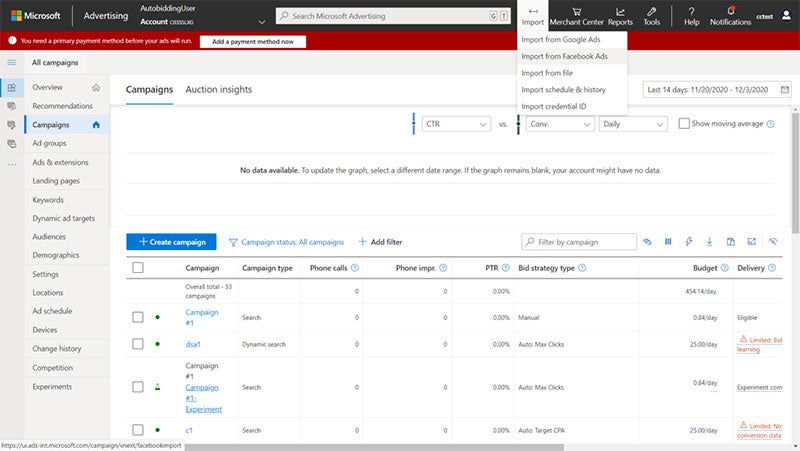
- Ad Creator — automated website image suggestions* provides a collection of relevant images from your website for you to repurpose with ease.

- Enhance your visuals
- Ad Creator — smart effects* help you modify the look and feel of your ads to stand out and represent your offerings in new and unique ways.

*Currently in pilot. Contact our support team or your account representative to get started.
Creative asset best practices
Imagery, video, and feed selection should be a key part of your planning process. Before deciding on placement and formats, think about the imagery you’d like to use, what you have, and how they’ll be received to meet your goals. It’s time to think proactively about creating, leveraging, and optimizing images as part of your strategy.
- Unify your creative strategy across tactics, platforms, and placements to make more impact and connect the dots for your customers.
- Leverage multiple image variations in one campaign.
- Use high-quality images that are not distorted, stretched, blurry, or pixelated.
- Refresh your visuals periodically to prevent viewer fatigue. Update seasonally for promotions and campaign relevance.
- Choose lifestyle photos. Images with people are more compelling to viewers.
- Ensure your creative strategy is inclusive and represents your values. Seek out realistic diversity, use inclusive language, and solicit diverse perspectives to uncover blind spots.
- Review platform requirements. Here are Microsoft Advertising image, audio and video guidelines.
Visual storytelling in the future
Using images will be even more critical as advertisers prepare for third-party cookie deprecation. Without easy retargeting, advertisers must deliver more captivating messages and experiences to drive engagement — and visual storytelling will be an essential component.
Visual storytelling makes your message easier to understand and results in more engagement for your customers — and better performance for your brand. As famed advertising executive David Ogilvy said, “It isn’t the whiskey they choose, it’s the image.”
Microsoft Advertising will continue to differentiate how we think about and use visual imagery — and you should too.
[1] Microsoft: Internal Data. December 2021.
[2] Microsoft: Internal Data. January 2022.
[3] Forrester: “The cost of Losing Creativity,” June 2019, https://go.forrester.com/wp-content/uploads/2019/06/The-Cost-Of-Losing-Creativity.pdf?
[4] Microsoft Internal Data, SMB advertisers. September 2020 – January 2021. Holiday period excluded.
[5] Microsoft Internal Data. US and Microsoft Advertising core owned and operated (O&O) only; Time Period: Sept 2019-Feb 2020 vs. Sept 2020-Feb 2021. Hours of Day converted from UTC to PST; PC Only.
[6] Microsoft: Internal Data. January 2020 - May 2021.
[7] Mobile Marketing Association: “Consumer Attention must be Earned, not Bought,” March 2019, https://www.mmaglobal.com/cognition
[8] Kantar: “Why visuals influence survey respondent engagement,” Nov. 2020, https://www.kantar.com/north-america/inspiration/research-services/why-visuals-influence-survey-respondent-engagement-pf
Your input makes us better
Take our quick 3-minute survey and help us transform your website experience.




